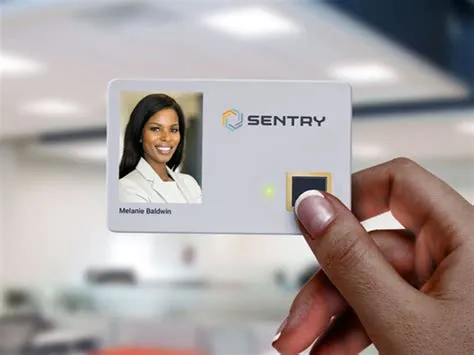Hey there, business owners and design enthusiasts! Let’s talk about something often overlooked but incredibly important: your business ID cards. They’re more than just plastic rectangles; they’re a reflection of your brand, a tool for security, and a statement about your company culture. And the world of ID card design is exploding with exciting new trends. Are you ready to ditch the boring, standard-issue cards and embrace something truly innovative?
We’re diving into the fascinating world of modern ID card design, exploring trends that blend aesthetics with functionality, security with sustainability, and creativity with practicality. Think of it as a makeover for your company’s identity, one plastic card at a time.
Beyond the Plastic: Exploring Materials and Sustainability
Forget the days of flimsy, easily-damaged plastic. Today’s innovative ID cards are embracing eco-friendly materials like recycled PVC, bamboo, and even plant-based polymers. Isn’t it fantastic that you can enhance your brand’s image and reduce your environmental footprint simultaneously? This isn’t just a trend; it’s a responsible choice. Learn more about the exciting possibilities of eco-friendly ID card materials and contribute to a greener future.
Furthermore, sustainable printing techniques are gaining popularity. Think soy-based inks and water-based coatings. These alternatives minimize harmful chemicals and reduce your carbon footprint without compromising the quality of your cards. Want to know more about the specifics? Check out our blog on eco-friendly printing techniques. It’s all about making a statement – a stylish, environmentally conscious statement.
The Power of Personalization: Customization and Design
Remember those generic, mass-produced ID cards? Time to say goodbye! Modern ID card design emphasizes personalization. This means going beyond a simple name and employee number. Think about incorporating your company’s logo creatively, using unique fonts, and adding personal touches like employee photos with a consistent, branded style guide. This not only strengthens your brand identity but also creates a sense of belonging and pride among your employees. Delve deeper into the art of personalization with our guide on customization and personalization in ID card design.
Imagine your cards as mini-billboards for your company, showcasing your brand’s visual identity with flair. Custom designs allow for limitless creativity. Consider using vibrant color palettes that reflect your brand’s energy, or opting for minimalist designs for a more sophisticated look. The possibilities are endless. Discover more about customization and design techniques to create truly unique cards.
Smart Cards and Biometric Technology: Security Redefined
Security is paramount, and modern ID cards are stepping up their game. Biometric technology, like fingerprint scanners and facial recognition, is becoming increasingly integrated into ID cards. These technology-integrated ID cards provide unparalleled security, restricting access to authorized personnel only. Think of it as a high-tech security guard, embedded right into the card itself. It’s like having a personal bodyguard for your sensitive information!
Moreover, the integration of smart card technology allows for the storage of additional information beyond the basic employee details. Think access control, digital signatures, and even payment capabilities. It’s a move towards a more seamless and secure working environment. This isn’t just about security; it’s about efficiency and convenience.
Want to delve deeper into the security aspect? Our blog on security and access control provides more insights into the latest trends and solutions. Don’t settle for less when it comes to protecting your business’s valuable assets.
Industry-Specific Designs: Tailoring to Your Needs
One size doesn’t fit all – and that’s certainly true for ID cards. Industry-specific designs are a rising trend, reflecting the unique needs and aesthetics of different sectors. A healthcare ID card will look vastly different from a construction worker’s ID card, and that’s perfectly fine! These cards need to reflect the industry they represent, making them functional and easy to identify. This specialization adds a layer of professionalism and enhances brand recognition within the industry. Explore our collection of industry-specific ID card designs for inspiration.
Think about it: a sleek, minimalist card for a tech company versus a more rugged, durable card for a construction company. The design should reflect the company’s brand and the environment in which the card will be used. The details matter! Discover more about design trends in industry-specific ID cards and find the perfect fit for your industry.
The Digital Revolution: Virtual and Digital ID Cards
The digital world isn’t leaving ID cards behind. In fact, it’s embracing them! Digital and virtual ID cards are gaining traction, offering convenience and flexibility. These cards can be stored on smartphones or tablets, eliminating the need for physical cards and offering quick access to employee information. Think of it as a digital version of your physical card – with all the same benefits, plus added convenience. Find out more about the latest trends in digital ID trends and how you can integrate this technology.
This evolution allows for easy access control, simplified onboarding, and an environmentally conscious alternative to physical cards. It is important to balance this technology with proper security measures to prevent potential breaches. Further information can be found by visiting our blog on digital and virtual ID cards.
Branding Your Way to Success: Corporate Branding with ID Cards
Your ID cards are a walking, talking advertisement for your brand. They’re a subtle but powerful way to reinforce your brand identity and create a consistent visual language across your organization. Think of your ID cards as miniature billboards, constantly promoting your company’s image, values, and brand colors. This consistent branding helps to create a cohesive and professional image to all who interact with your employees. Don’t just think about the information included; also think about how it’s communicated. Discover how you can further integrate branding into your ID cards by viewing our blog on corporate branding with ID cards.
By integrating your brand colors, logo, and fonts, your employees become living brand ambassadors. This cohesive branding creates a unified front and projects professionalism both internally and externally. It’s a small detail with a big impact. Check out how to further strengthen your company’s image through your ID cards by viewing branding with ID cards.
Conclusion:
In a nutshell, the future of business ID card design is vibrant, innovative, and sustainable. By embracing these trends, you’re not just updating your company’s look; you’re enhancing security, boosting employee morale, and demonstrating your commitment to sustainability. It’s a win-win-win situation. So, ditch the boring, outdated ID cards and embrace the exciting world of innovative design. Your employees – and your brand – will thank you for it! Remember to check out our comprehensive blog, amazing.biz.id/blog, for more insightful articles and guides! We’ve also got some great ideas for modern ID card design ideas.
Frequently Asked Questions
- What are the most sustainable materials for ID cards? Recycled PVC, bamboo, and plant-based polymers are excellent eco-friendly options.
- How can I incorporate my company’s branding into my ID cards effectively? Use your brand’s colors, fonts, and logo consistently. Consider a minimalist design or a more vibrant style, depending on your brand identity.
- What are the benefits of using biometric technology in ID cards? Biometric technology enhances security by restricting access to authorized personnel only, and prevents fraud.
- Are digital ID cards a secure option? Yes, but it’s crucial to implement strong security measures to prevent data breaches. Multi-factor authentication and encryption are essential components.
- How do I choose the right ID card design for my industry? Consider the functionality and aesthetic needs specific to your industry. A rugged design might suit construction, while a sleek design might work better for a tech company. Also, ensure your designs meet any industry regulations.

